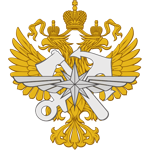Oleg Al. Antonov. Evidence formation in a traffic crime investigation
UDK: 343.9
Oleg Al. Antonov - candidate of Law, associate professor of the department of criminal law, criminal procedure and criminalistics, Law Institute of the Russian University of Transport
Abstract. The paper considers various aspects of the formation of physical evidence in transport criminal cases. There has been indicated that very serious incidents can occur not because of humans, but due to the action of irresistible natural force. At the same time, the actions of a person who violates or does not comply with certain traffic rules can lead to numerous victims, as have been indicated by the examples. The attention has been paid to the fact that successful solution and effective investigation of crimes committed at transport are possible only if there is relevant evidence obtained as a result of their detection, documenting and collection. In this case, the most important evidence is the evidence obtained from material sources, although a subjective evidence should also be taken into account. The attention has been especially paid to the correct estimation of material evidence in cases of transport crimes in general and railway transport crimes in particular, as the most objective ones (i.e. not subjected to subjective effect). There has been described the recognition procedure for certain crime traces as evidence in a criminal case. To solve a criminal case, it is not a specific subject that matters, but its relevance to the investigated crime, i.e. when it acts as a carrier of the evidence. The signs of an object, its appearance, location and detection, and its connection with the circumstances being proved make this subject a material evidence.
Keywords: railway transport; evidence; substantiation/proof; fact at issue; transport crime; an incident; traces of crime.
References:
- Sudenko, V. Ye. Transportnyye prestupleniya: osobennosti kvalifikatsii [Traffic crimes: particularities of qualification]// Transportnoye pravo i bezopasnost'. — 2016. — № 11 (11). — S. 15—20.
- Sudenko, V. Ye. Transportnyye prestupleniya i ikh analiz [Traffic crimes and their analysis] // Mir transporta. — 2013. — T. 11. — № 4 (48). — S. 170—174.
- Sudenko, V. Ye. Taktika osmotra mesta zheleznodorozhnogo proisshestviya [Tactics of inspecting a railway accident site] // Mir transporta. — 2017. — T. 15. — № 1 (68). — S. 210—222.
- Zhavoronkov, V. A. Nekachestvennyy remont podvizhnogo sostava i ob"yektov transportnoy infrastruktury — pryamaya ugroza bezopasnosti na transporte [Poor-quality repair of rolling stock and transport infrastructure facilities - a direct threat to transport security] // Transportnoye pravo i bezopasnost'. — 2016. — № 6. — S. 27—34.
- Sudenko, V. Ye. Ustanovleniye tipa transportnogo sredstva, kharaktera proisshestviya i ikh sootvetstviya priznakam, ukazannym v stat'ye 264 Ugolovnogo kodeksa Rossiyskoy Federatsii [Establishing the type of vehicle, the nature of the incident and their compliance with the signs specified in Article 264 of the Criminal Code of the Russian Federation] // Transportnoye pravo i bezopasnost'. — 2017. — № 2 (14). — S. 29.
- Antonov, O. A. Veshchestvennoye dokazatel'stvo — soderzhaniye v forme [Material evidence, its contents and form] // Transportnoye pravo i bezopasnost'. — 2017. — № 5 (17). — S. 15—21.
 Transport Law and Security
Transport Law and Security